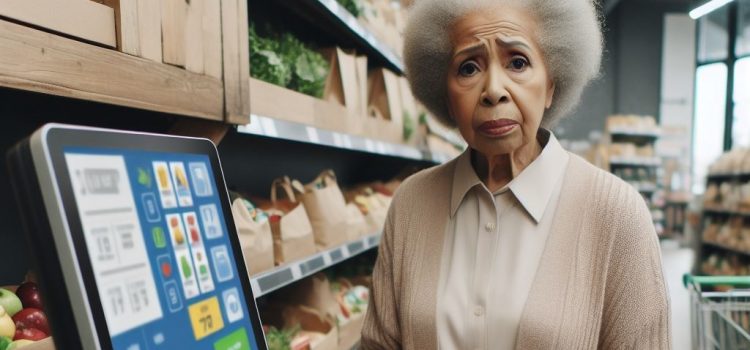
This is a free excerpt from one of Shortform’s Articles. We give you all the important information you need to know about current events and more.
Don't miss out on the whole story. Sign up for a free trial here .
Are self-checkout problems worth the rewards? What negative impacts do they have on customers and employees? How do they harm businesses’ bottom line?
Following an expansion of self-checkout machines in stores during the Covid-19 pandemic, some retailers are reconsidering the kiosks. Many companies complain that they’re not getting the bigger profits the machines initially promised—but they are getting bigger problems.
We’ll take a look at the downfalls of self-checkout kiosks below.
The Cost of Convenience
Self-checkout machines rose in popularity during the pandemic, promising speed, convenience, and cost savings. But glitchy technology and swelling kiosk expenses have retailers questioning whether self-checkout problems are worth the rewards.
Background
Self-checkout technology emerged in US grocery stores in the late 1980s as a labor-cost-cutting measure. In recent years the machines have become ubiquitous in major retail stores, their expansion fueled by Covid-19-driven labor shortages and Americans’ desire to limit contact with staff.
- Self-checkout machines accounted for 30% of all US grocery store transactions in 2021.
- In 2022, 96% of 38,000 retailers surveyed offered self-checkout options.
But a growing number of retailers are reassessing their checkout strategies and scaling back use of the machines.
Self-Checkout Machines: Not a Panacea
Experts say that self-checkout kiosks are causing dissatisfaction among customers, workers, and retailers alike.
Poor User Experience
Although some shoppers enjoy parts of the self-checkout experience, including perceived shorter wait times and the ability to avoid awkward interactions with cashiers, many are increasingly frustrated with the unmanned machines, citing problems including:
- Glitchy technology.
- Barcodes that don’t scan properly.
- Difficulty scanning common items, such as produce.
- Encountering error messages that slow the process, such as “unexpected item in the bagging area.”
- Having to call staff for assistance to address technological problems or verify their age to buy products like alcohol.
Negative Impact on Workers
Workers also have concerns about self-checkout machines, including that they are:
- Taking human jobs. Self-checkout systems and online sales are primarily responsible for a decline in cashier positions, which fell from roughly 1.4 million in 2019 to 1.2 million last year.
- Transforming cashier jobs in undesirable ways—turning them into attendant roles that focus on monitoring customer theft and assisting shoppers at the unmanned kiosks.
Potential Harm to Companies’ Bottom Lines
Although retail executives initially viewed self-checkout machines as a means of lowering payroll costs, the kiosks have proven more expensive than anticipated due to factors including:
- High upfront installation costs. Four kiosks cost an average of $125,000.
- Ongoing expenses related to machine maintenance.
- An increased risk of shoplifting and other forms of “shrink”—such as when customers inadvertently fail to scan an item or punch in the wrong code for a cheaper product.
Looking Ahead
Experts say US retailers are at a crossroads with self-checkout machines: If shoppers continue to show interest in the kiosks, companies will expand their use to cut labor costs. However, at present, retailers are seeing growing customer frustration, higher expenses, and increased theft with the machines’ expansion.
As a result, many large retailers are assessing and recalibrating their checkout strategies to figure out what model will work best. For example:
- Walmart appears to be moving toward a hybrid checkout model that combines self-checkout and human cashiers.
- Target introduced a self-scanning limit of 10 items per checkout in select stores to decrease customers’ wait times at kiosks.
- ShopRite removed self-checkout machines from a Delaware store following customer complaints.
- Amazon Go stores have taken checkout a step further with their “just walk out” model, replacing individual item scanning with an entirely automated shopping experience. Shoppers simply enter the store, pick the items they want, and leave without needing to stop, scan, or pay—and Amazon automatically bills their account for those goods.
Although a majority of Americans say they’d choose a self-checkout kiosk over a human cashier, 67% believe the shift from humans to machines is making it harder to have meaningful connections.

Want to fast-track your learning? With Shortform, you’ll gain insights you won't find anywhere else .
Here's what you’ll get when you sign up for Shortform :
- Complicated ideas explained in simple and concise ways
- Smart analysis that connects what you’re reading to other key concepts
- Writing with zero fluff because we know how important your time is






